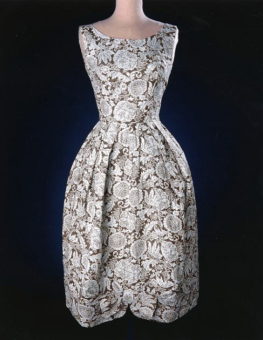During the Great Depression in the United States, when money for even basic needs was scarce, women showed that functionality and aesthetics could be created even out of limited resources.
At that time, flour sacks were woven from cotton and, instead of being discarded, became raw material for dresses, skirts, shirts, and bedding. There was something profoundly rational about this – a cycle of reuse emerged spontaneously, long before recycling was spoken of as a social or ecological obligation.

Companies quickly recognized this trend. Instead of rough canvas sacks, they began to use softer cotton, printing floral and geometric patterns onto the fabric. They realized that their packaging was not ending up in waste but in households, becoming part of a broader life story. Even company logos were adapted – printed with plant-based ink that could easily be removed, allowing women to use the fabric without unwanted marks. In this way, marketing and functionality became allies in difficult times.
This episode in history tells a story far beyond mere practicality. It raises the question of the value of materials and our relationship to things. If, in times of scarcity, it was natural for packaging to be turned into clothing, why is it so difficult today, in an age of abundance, to find meaning in reuse?
Dresses made from flour sacks were not a symbol of romanticized poverty but a testimony to rational and sustainable thinking. Today, when we live in an era of excess and short-lived products, these examples serve as lessons. Recycling is not a new idea – it has always been there; once it was a necessity, today it should be a conscious choice.
Instruction manuals on how to sew clothes from sacks can still be found online. This may sound like a curious oddity, but in fact, it is a valuable reminder that innovation and sustainability go hand in hand.
Therefore, let this article also serve as a reminder that materials always hold value, and that value does not disappear with their first use.
